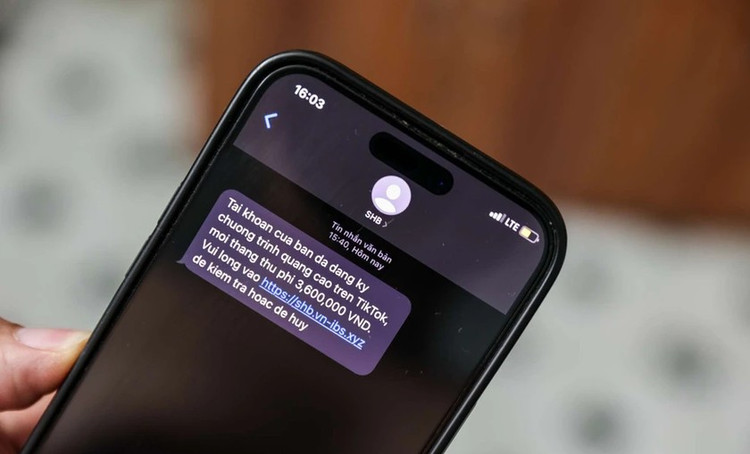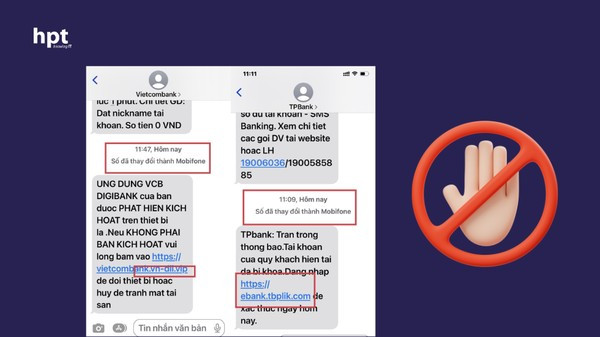Google has revealed that the average malicious message only lasts for less than 10 minutes before being detected and removed. However, this short period of time is enough for attackers to launch attacks, steal login credentials, or install malware on your device without you even knowing.
AI re-creates old tricks
Fake emails , text messages warning of unpaid bills, and notifications of undelivered packages are all being used by hackers to trick phone and computer users. Research from Zimperium shows that users are more likely to fall victim when using their phones than computers, and hackers have learned to exploit this weakness.

Clicking on a malicious link sent via text message can cause your phone to be hacked in less than 10 minutes. Photo: TH.
According to DomainTools statistics, 2024 saw more than 106 million new domain names registered, equivalent to about 289,000 domains per day, a number that puts a lot of pressure on security teams globally, especially malicious domains tied to viral media events.
The research team analyzed a series of hot events such as the Los Angeles fire, AI technologies developed in China, trade wars... to find related scam websites.
Initially, they believed that these attacks were designed to steal login credentials, but in reality, the main goal was financial gain. Fraudsters often created fake websites soliciting donations for disaster victims or selling related merchandise, and even issued fake meme cryptocurrencies based on the event's theme.
A typical example is the scam involving DeepSeek . Data from BeInCrypto shows that the amount of money from fake meme coins reached over $46 million before being discovered, most likely the people behind it had withdrawn all the money before the incident was discovered.
DomainTools uses artificial intelligence technology to create keyword lists and then search for new suspicious domains, with simple, realistic domains like “lafirevictimsupport[.]com” or “lafireonsol[.]xyz” identified as being used to scam donations on behalf of organizations like the American Red Cross.
GOLDEN RULES TO ESCAPE THE SCAM TRAP
Security agencies such as the FBI have repeatedly warned users to be highly vigilant when faced with viral online campaigns, especially messages or websites that create a sense of urgency, urging immediate action.

Never click on suspicious links. Photo: HPT
The golden rule is to never click on a suspicious link. If you want to support a charity like the Red Cross, go directly to their official website.
Also, be sure to check the domain extension, legitimate websites usually don't use extensions like .XYZ or .TOP, which are common in fake domain names.
In addition, Google has also developed new technologies to detect and flag these threats, however, with the rapid growth of malicious domains every day, completely preventing phishing scams remains a big challenge.
Source: https://khoahocdoisong.vn/boc-me-tin-nhan-doc-hai-hack-dien-thoai-trong-nhay-mat-post1541784.html




































































































Comment (0)